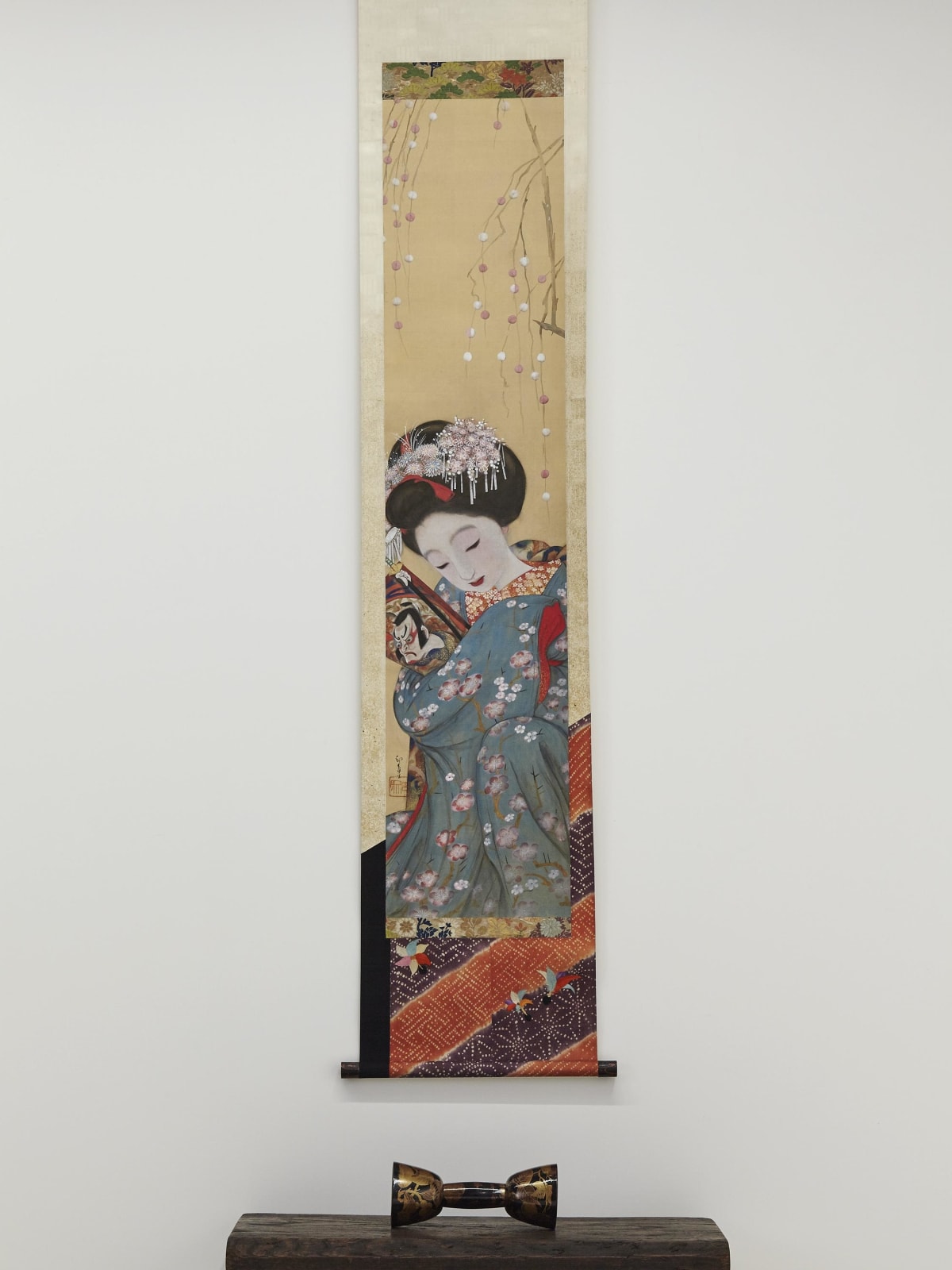Dōmoto Inshō(1891–1975)
Song of Battledore
Color, gold, and silver on silk, hanging scroll
With a box signed by the artist (1921), double boxed
Seal: Insho
133 x 29.6 cm
205 x 38 cm (overall)
With a box signed by the artist (1921), double boxed
Seal: Insho
133 x 29.6 cm
205 x 38 cm (overall)
Further images
A young maiko (apprentice geisha) holds an oshie battledore, a kind of decorative battledore with a padded picture on one side, tightly, as if the figure of samurai grasping the sword on the battledore were her lover. Her eyes closes, eyelids and cheeks blushing rosy; viewers cannot help but wonder: is she in deep thought of an unattainable love? The red-and-white mochibana (branches decorated of colored rice ball) and the embroidered shuttlecock on the work’s mounting indicates that it is the New Year. Yet the plum blossom motif of the maiko’s kimono not only predicts the coming spring, but also suggests that the spring of the maiko’s heart has come. Domoto Insho applied a rather unusual technique among his oeuvre in this work. If we do not refer to his signature, we would not be able to recognize that this is a masterpiece by Insho, which demonstrates the variety of his subjects and the excellence of his painting technique.
Domoto Insho (nihonga painter; 1891–1975)
Kyoto-born nihonga painter. His real first name is Sannosuke. Graduated from the Kyoto City School of Arts and Crafts, and later studied under Nishiyama Suisho at the Kyoto Municipal Special School of Painting and at Seikosha, Suisho’s private school of painting. Worked in a variety of medium and styles, including abstract painting, sculpture and craft. Received commissions of the fusuma (sliding-door panels) and mural paintings at distinguished temples such as Daitoku-ji, Ninna-ji, To-ji and Daigo-ji. Established Tokyu-sha, his own private school of painting. Appointed professor at the Kyoto Municipal Special School of Painting. Nominated a Teiten jury member, an Imperial Court Artist, and Member of the Japan Art Academy. Designated as a Person of Cultural Merit and received the Order of Culture.
Domoto Insho (nihonga painter; 1891–1975)
Kyoto-born nihonga painter. His real first name is Sannosuke. Graduated from the Kyoto City School of Arts and Crafts, and later studied under Nishiyama Suisho at the Kyoto Municipal Special School of Painting and at Seikosha, Suisho’s private school of painting. Worked in a variety of medium and styles, including abstract painting, sculpture and craft. Received commissions of the fusuma (sliding-door panels) and mural paintings at distinguished temples such as Daitoku-ji, Ninna-ji, To-ji and Daigo-ji. Established Tokyu-sha, his own private school of painting. Appointed professor at the Kyoto Municipal Special School of Painting. Nominated a Teiten jury member, an Imperial Court Artist, and Member of the Japan Art Academy. Designated as a Person of Cultural Merit and received the Order of Culture.









